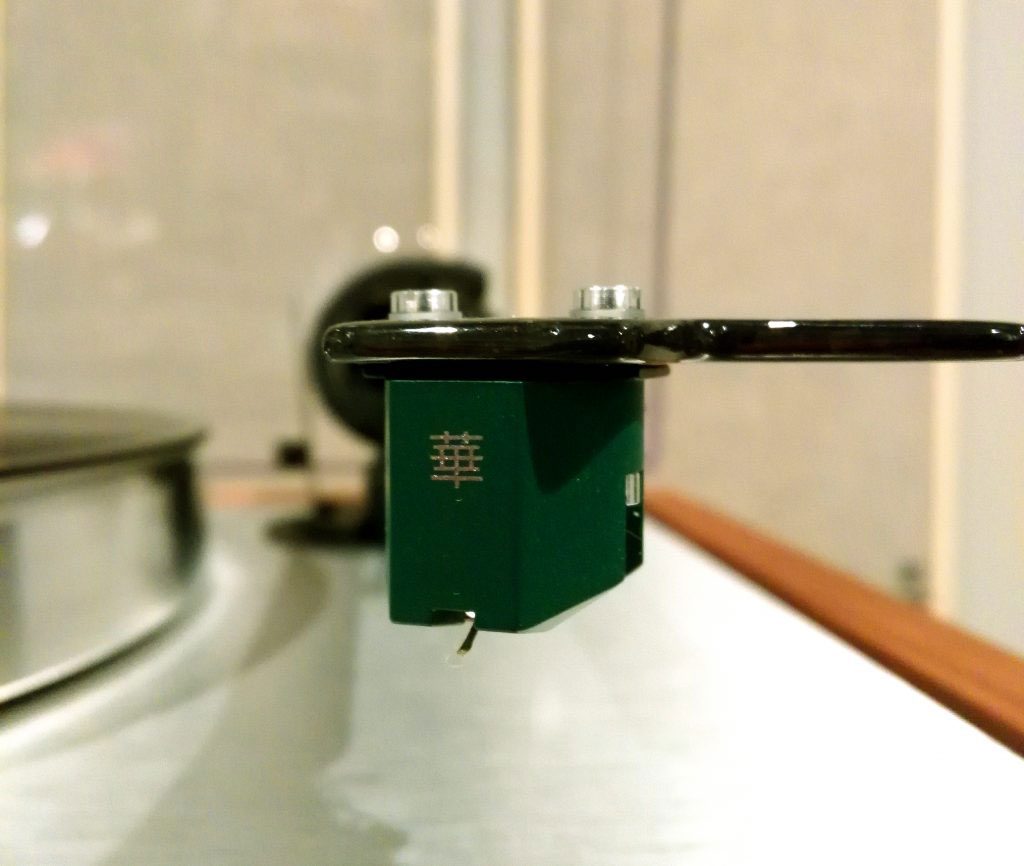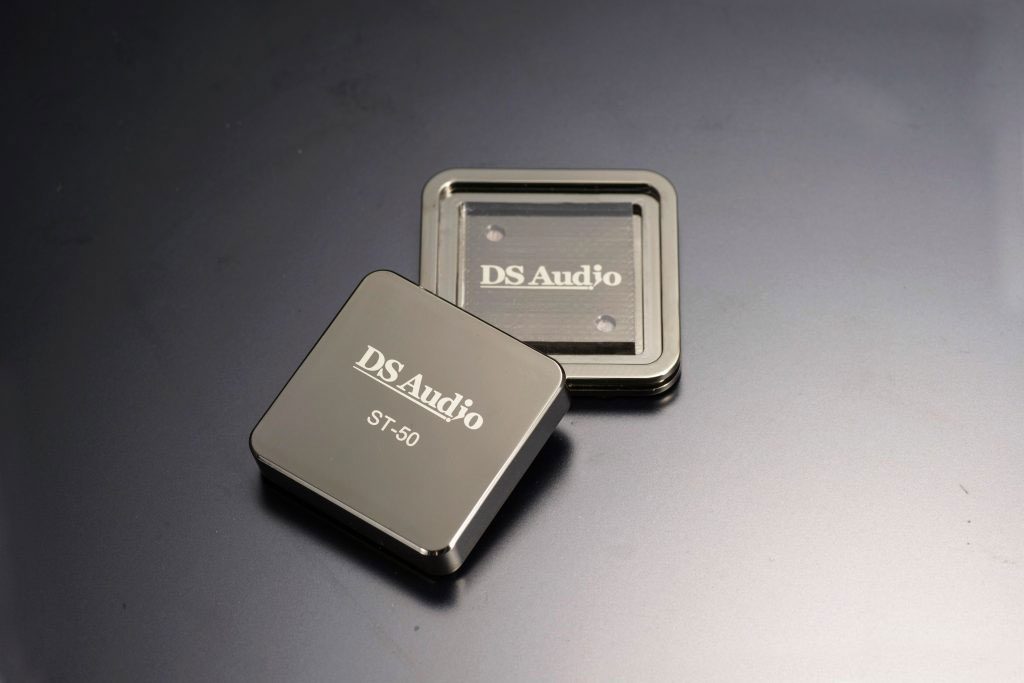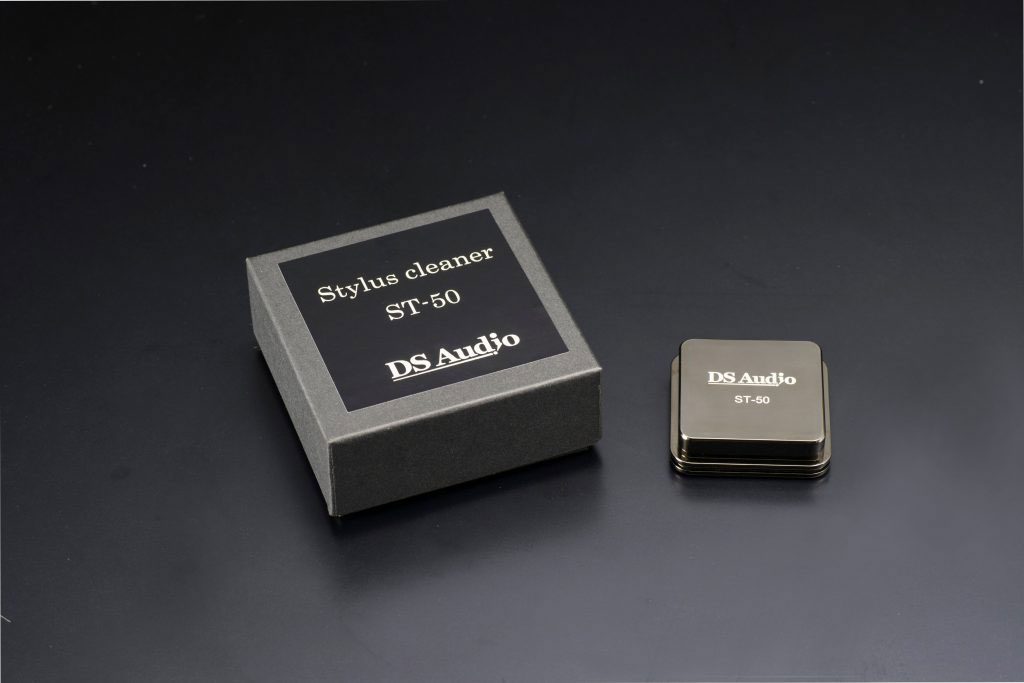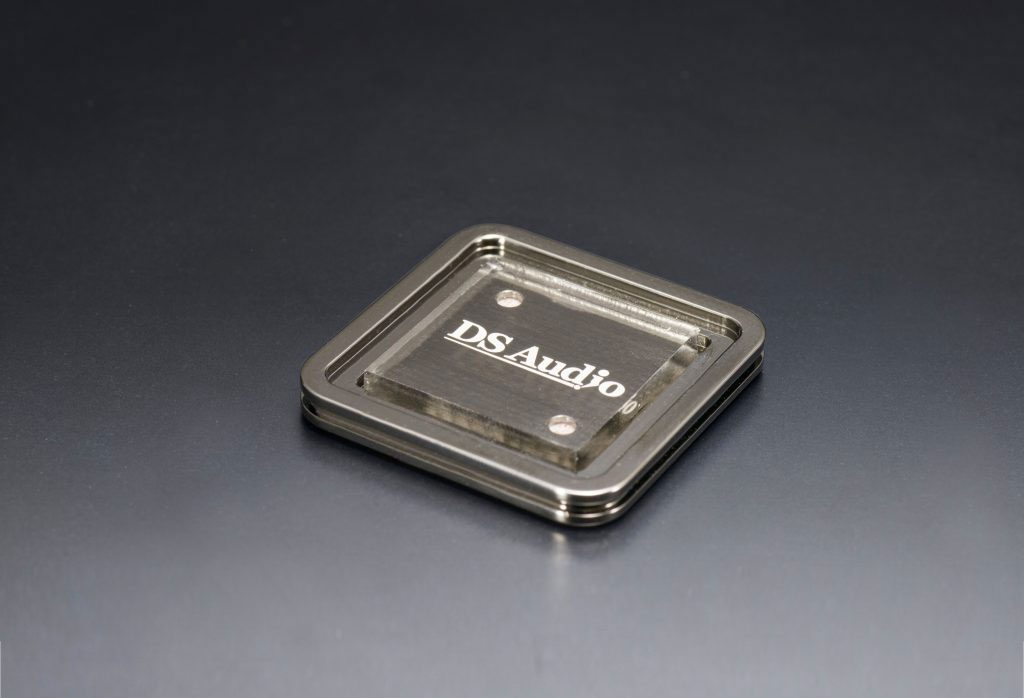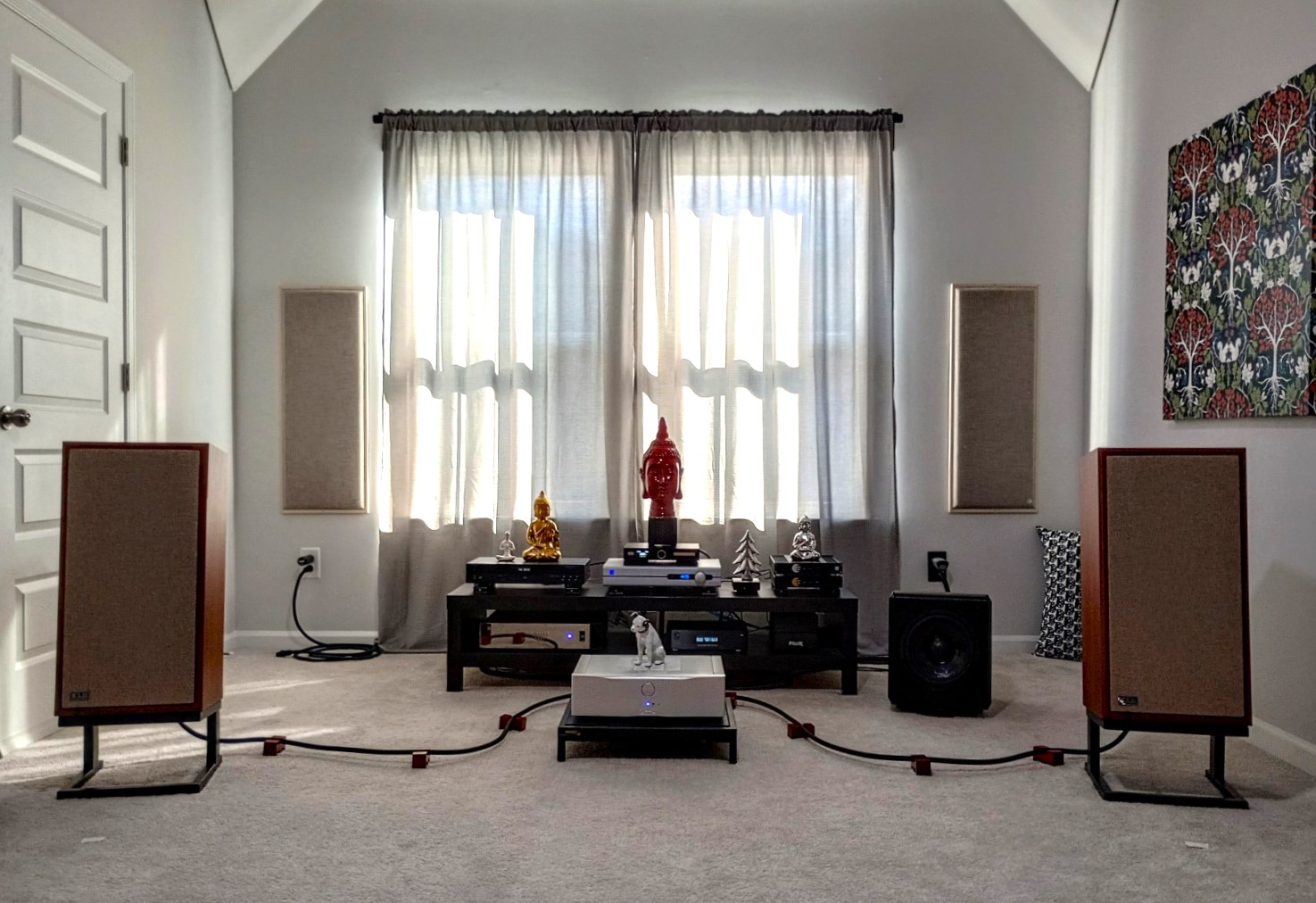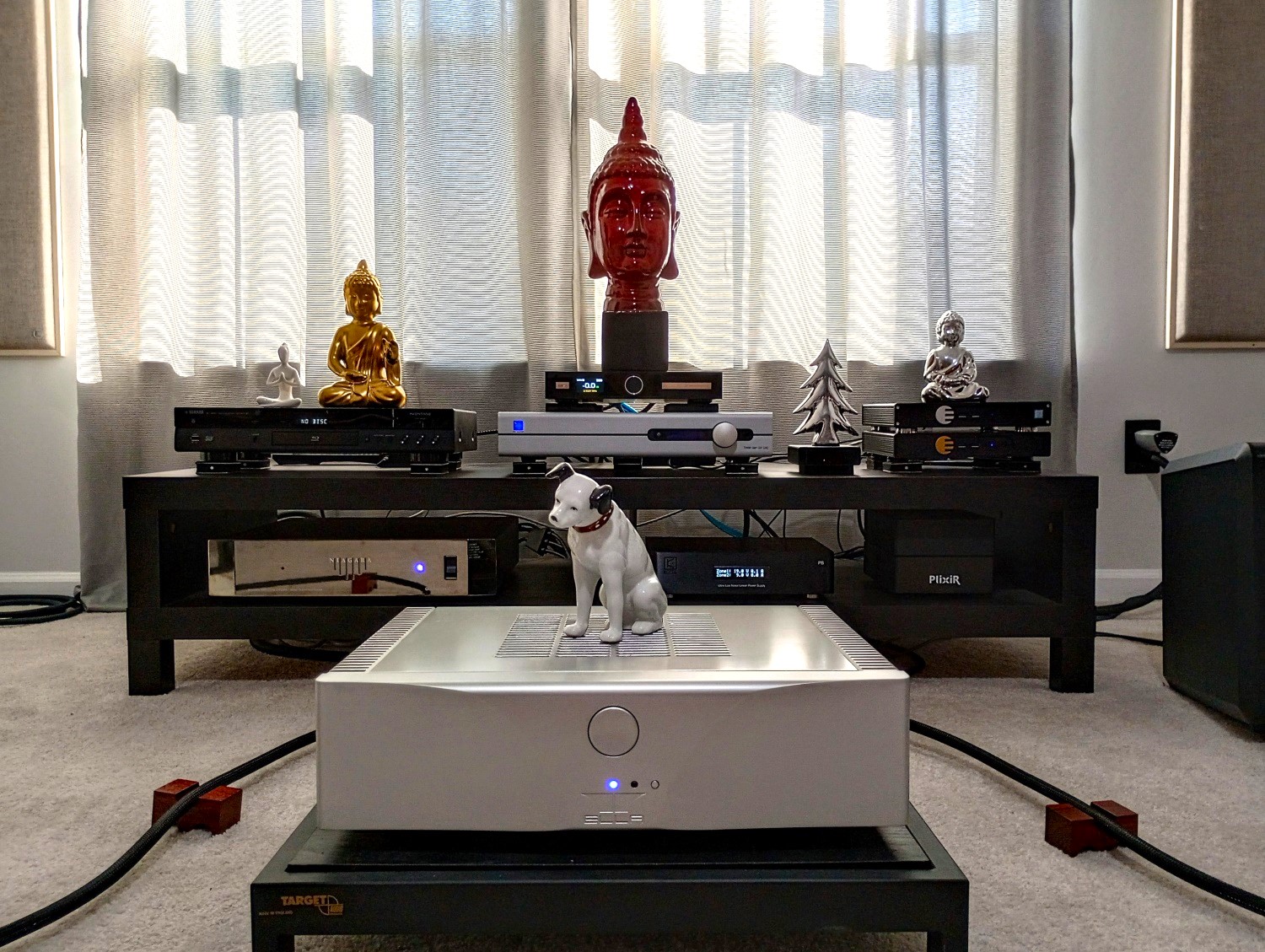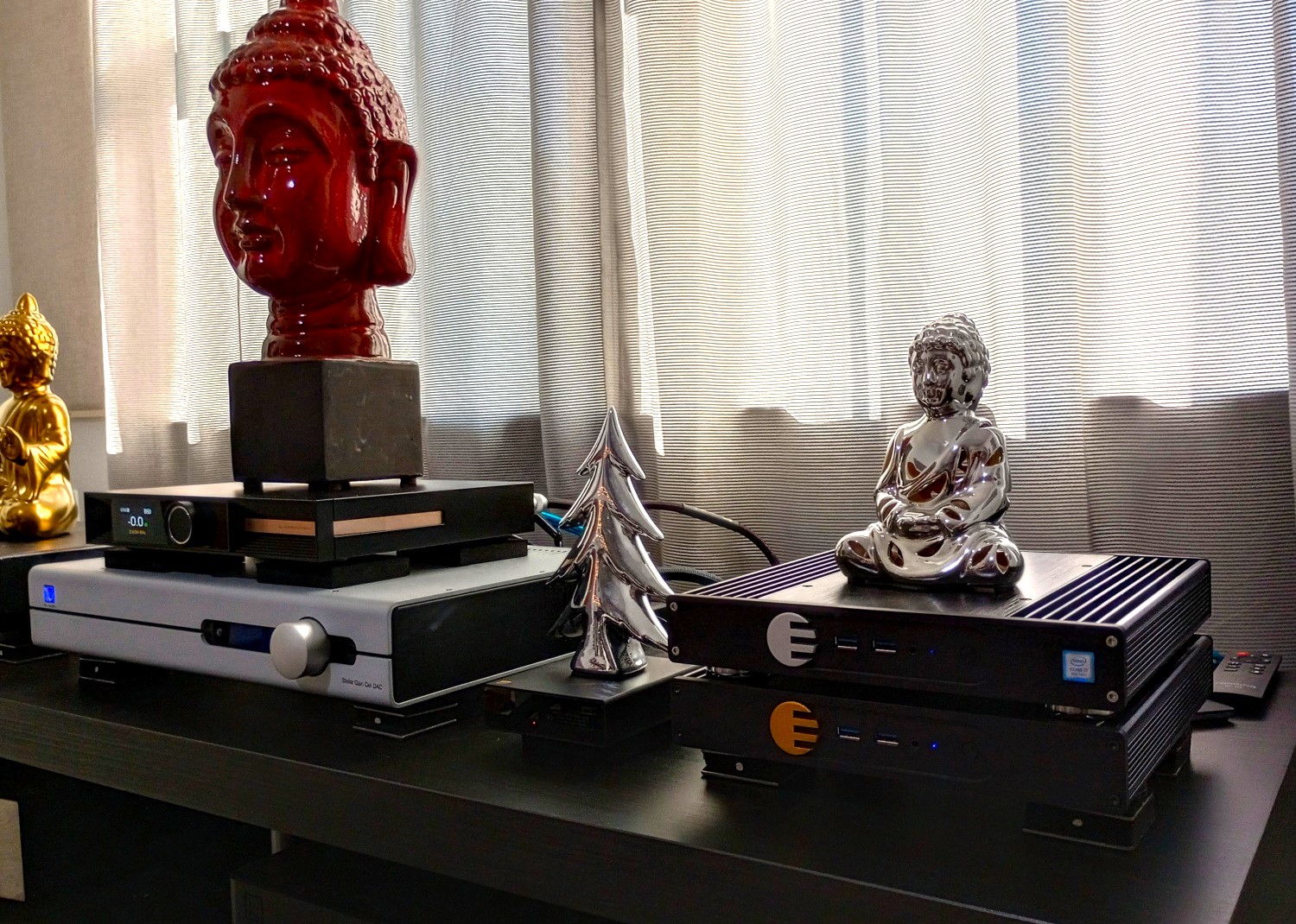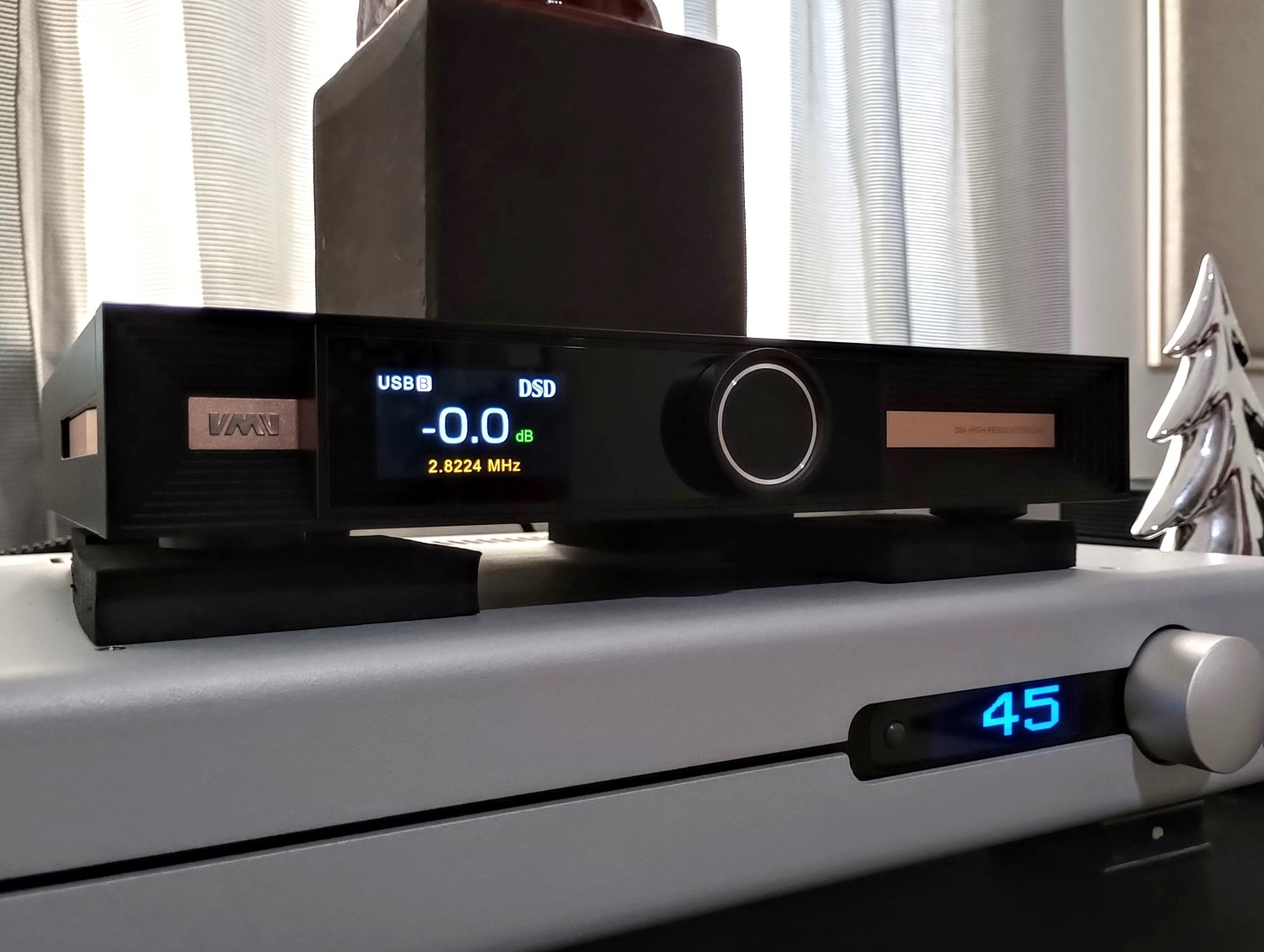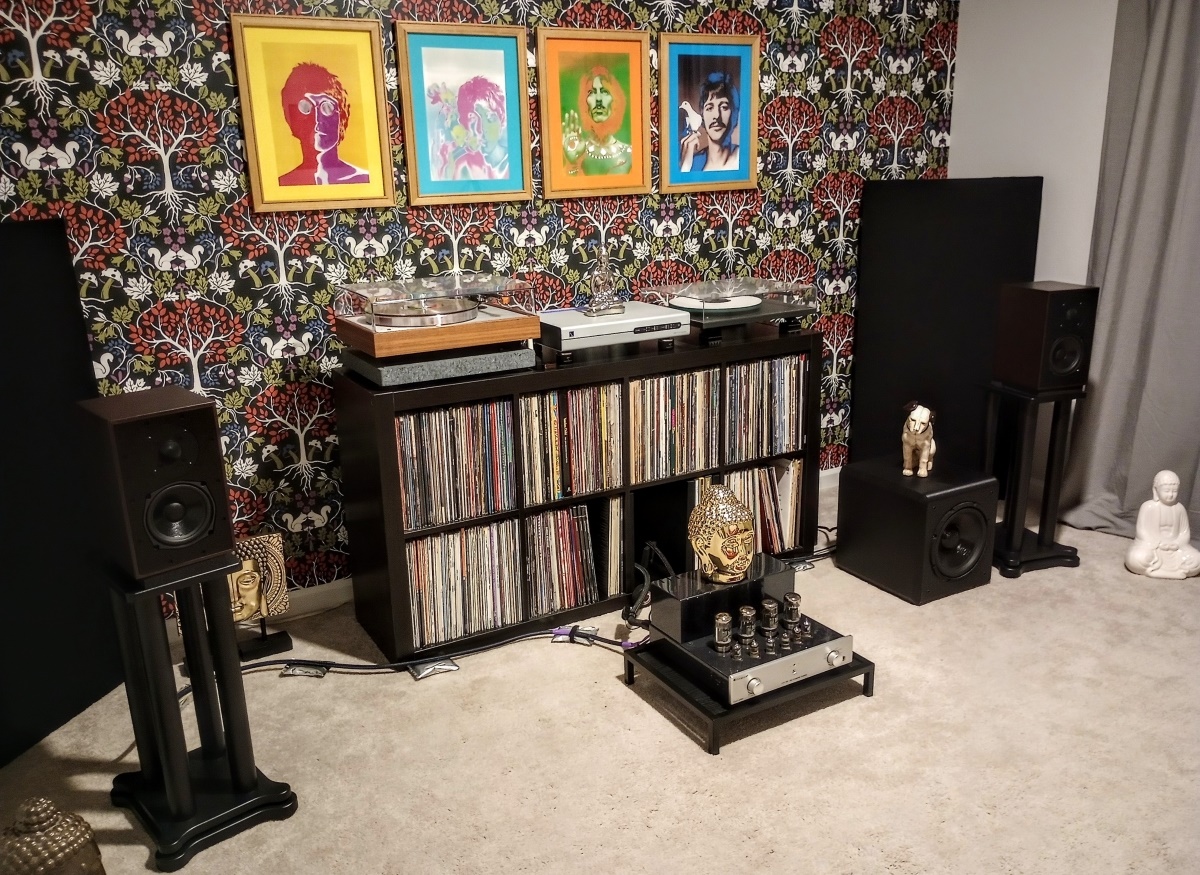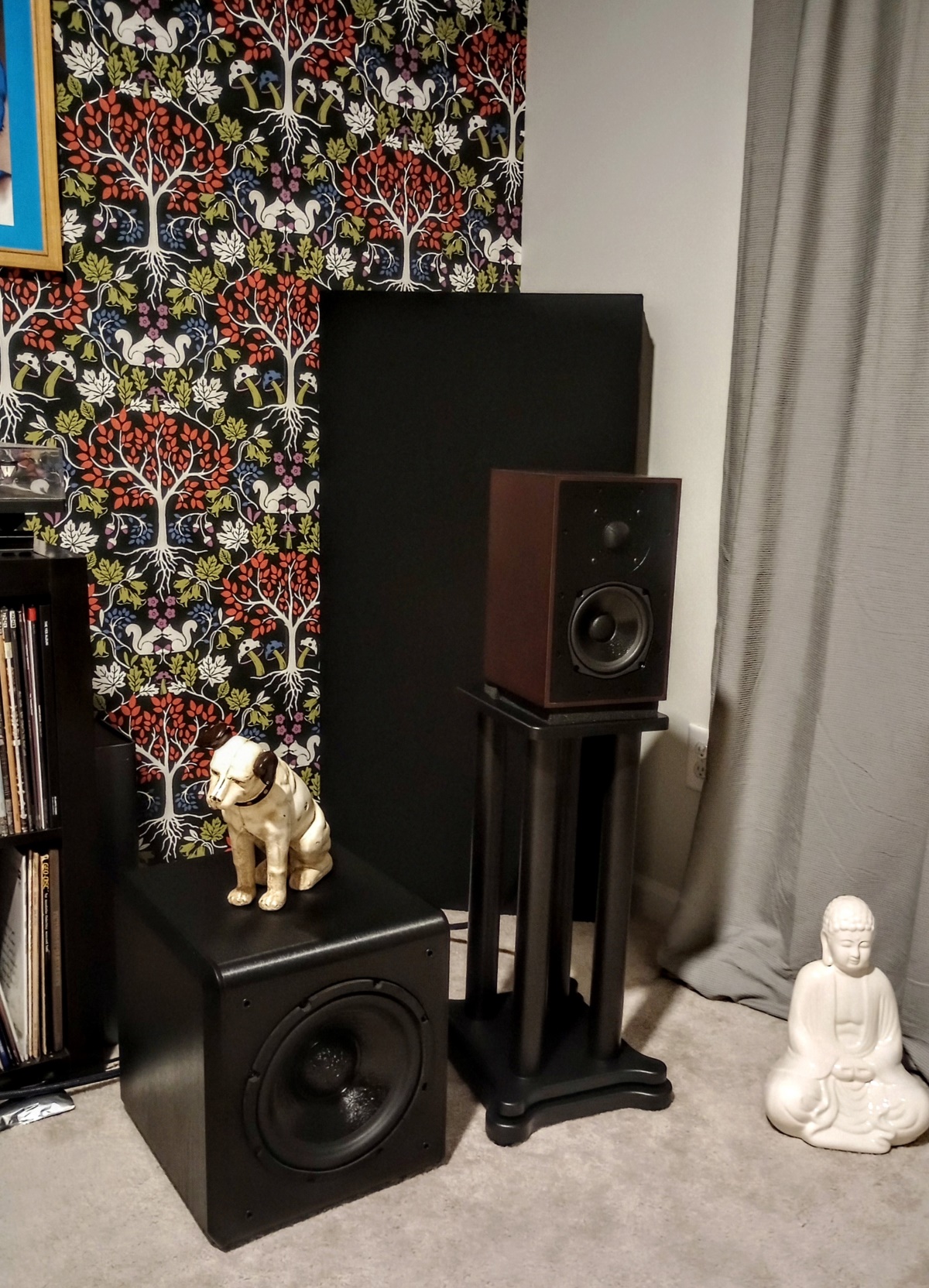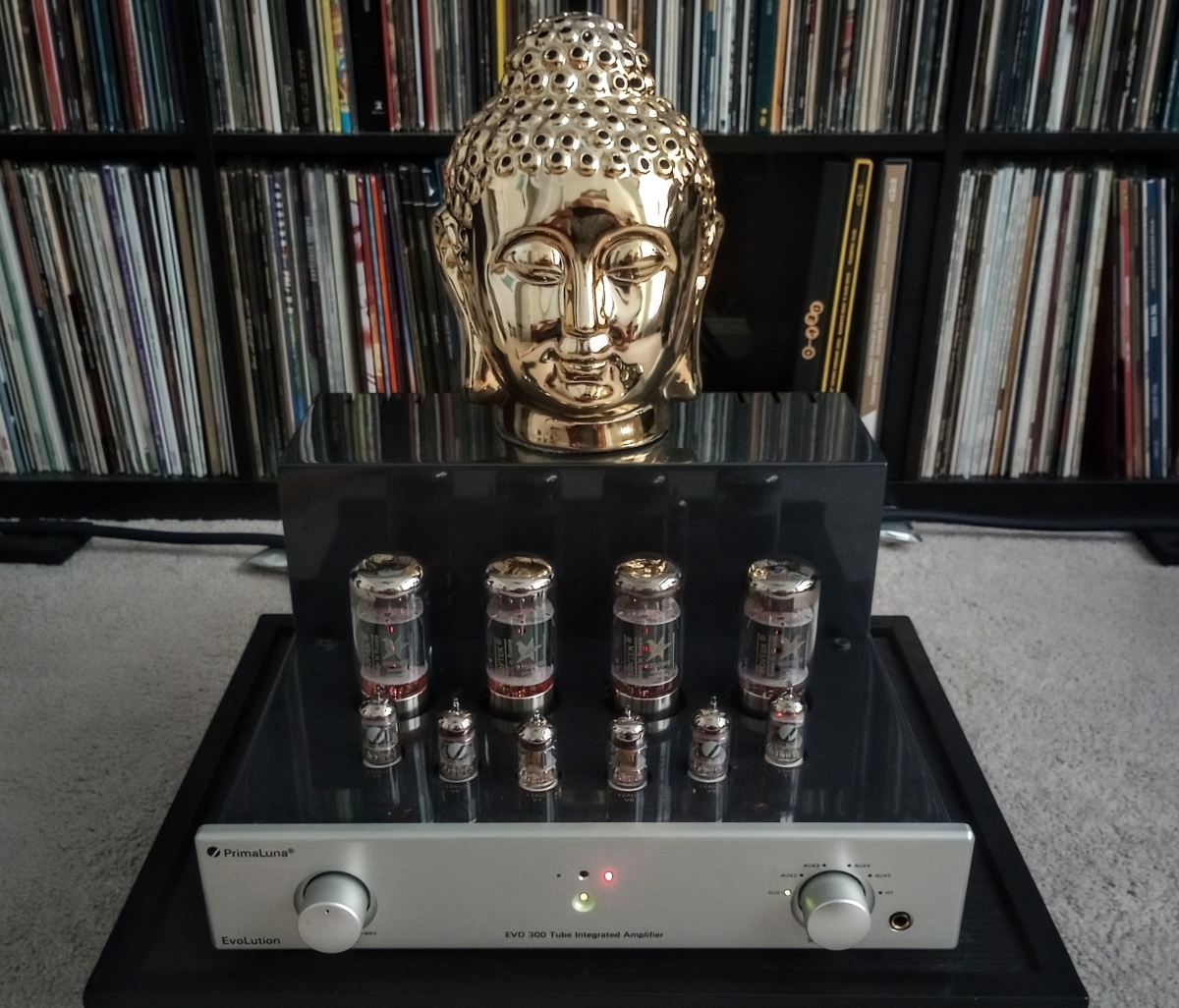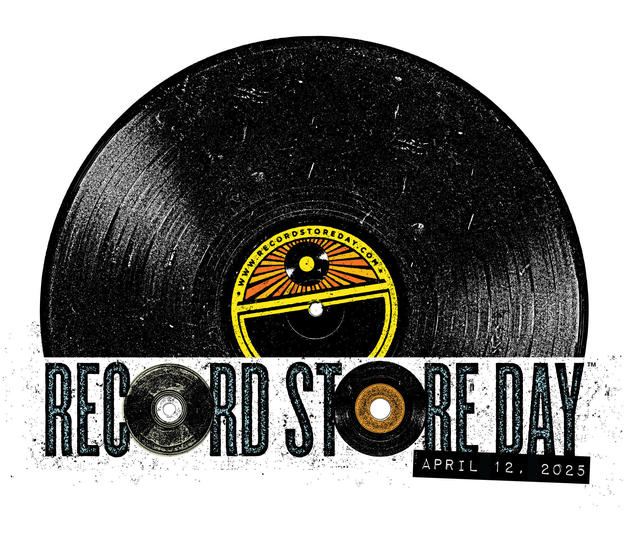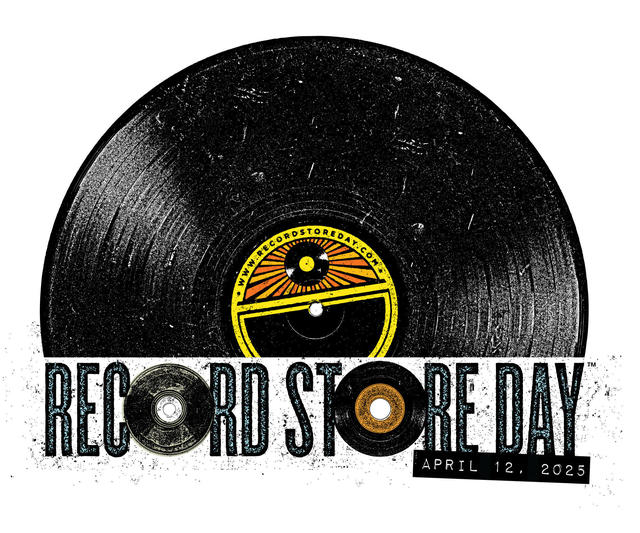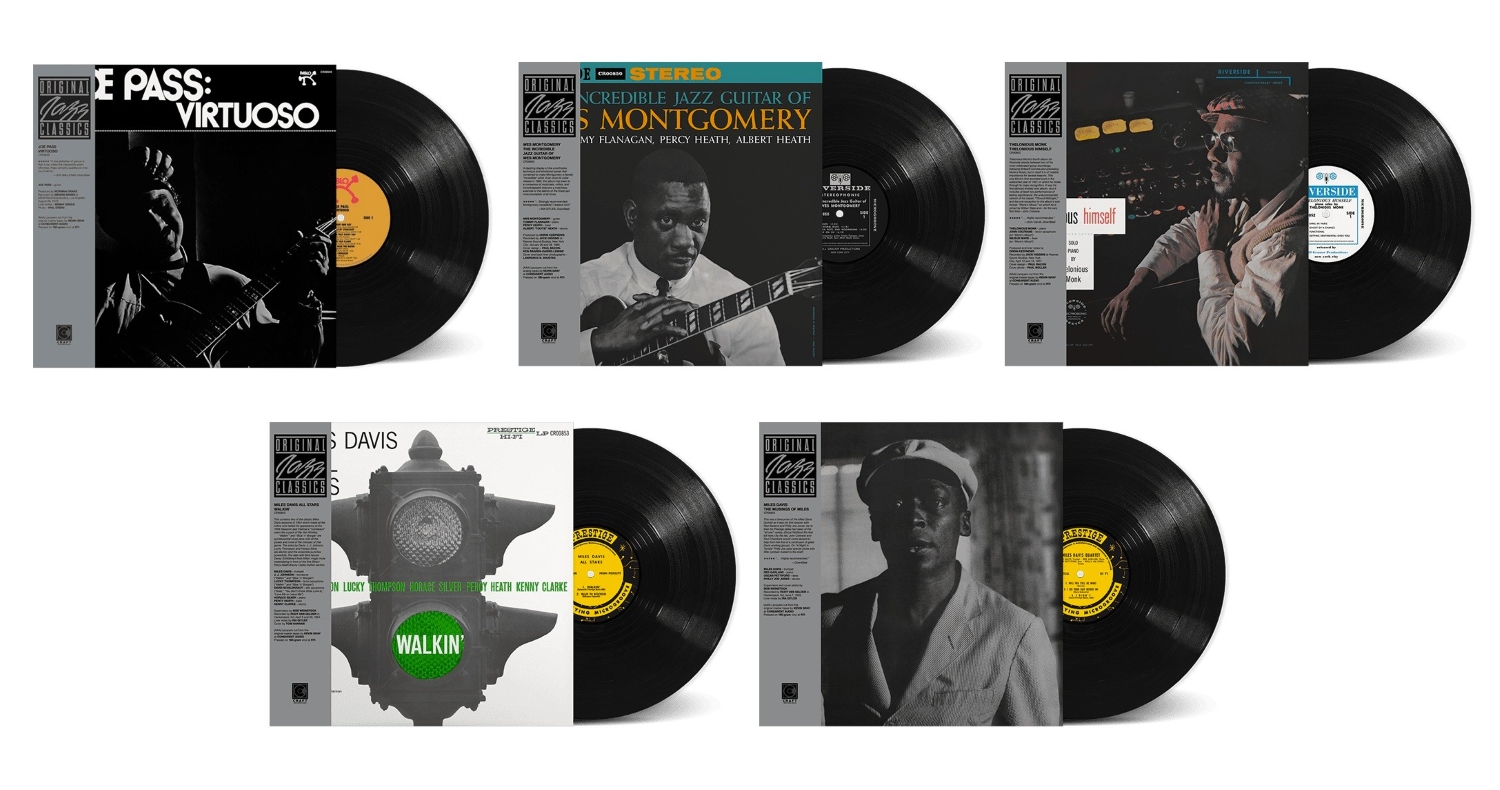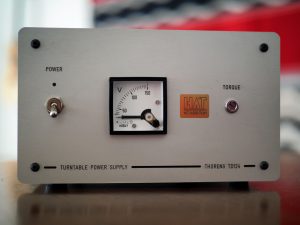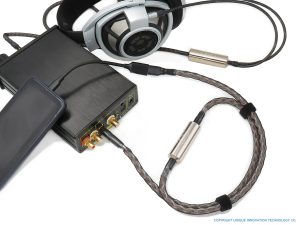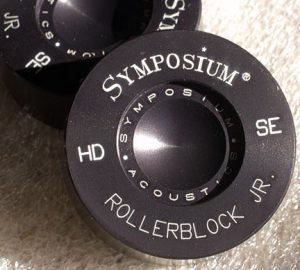There's a scene from The Godfather where Sonny, Michael, Tom Hagen, Tessio, and Clemenza are all sitting around, strategizing in the aftermath of the failed assassination attempt on Don Corleone. They're also concerned with the whereabouts of Luca Brasi, the family's ruthless hit man. Tessio then brings in a brown paper wrapped package and places it in front of Sonny. Sonny opens it; there's a couple of big fish inside, and Luca Brasi's vest. An agitated Sonny says, "What's this?" Tessio tells him, "It's a Sicilian message. It means that Luca Brasi sleeps with the fishes." Sometimes a literal message isn't necessary to get the point across.
I recently reviewed the analog front-end combination of the Hana SL Phono Cartridge, Musical Surroundings Phonomena II+ Phono Preamplifier, and the accompanying Musical Surroundings Linear Power Supply—you can read my evaluation conclusions HERE. The bottom line, this trio of products offers affordable, state-of-the-art analog performance for audiophiles on just about any budget. In the review, I made a comment that I think must have gotten Garth Leerer's (of Musical Surroundings) wheels spinning. The comment revolved around my record cleaning process; I don't own a record cleaning machine, so I manually clean all my records. Now mind you, Garth never explicitly expressed my interpretation of his intentions to me, but only a complete idiot couldn't follow the logic of his thinking. You know, a complete idiot—like me!
I use a Disc Doctor Quick Wash solution for record cleaning. It's a one-step wash process with no rinse; the fluid comes in a liter bottle, and they supply a smaller (more manageable) applicator bottle and cleaning brushes. Using the applicator, I squirt a generous amount of the fluid on the record's surface, then rotate the record and brush it vigorously in the direction of the grooves. This part of the process takes several minutes; I then use 100% cotton dish drying towels that I get at WalMart to remove the excess fluid—again, following the direction of the grooves. The cloths are very soft, and lint free, and I've yet to find any reason to believe that they're not taking perfect care of my records. I was in a local independent record store recently (Al Bum's in Acworth, GA), and several employees were using a Spin Clean to wash recently purchased used records, then mopped them dry with the same cloths I use. And they process a whole lot more used LPs than I do!
I then use a carbon fiber brush while rotating the record for a minute or so to push any excess fluid from the grooves, then place the LPs in a rack for air-drying. I've been using this process for about five years now, both with new and lots of used vinyl, and I can't really complain about the results. Dirty used records are rendered visibly much cleaner, and the proof is generally in the playing. Especially with used records; after a couple of plays, they generally are much quieter, with fewer ticks and pops. I'm pretty picky about the used vinyl I buy, so we're not talking about seriously dirty records that appear to have mold growing on them, etc.
I think Garth's concern came from my comments about my record cleaning process with relation to the Hana SL cartridge and its Shibata stylus. Its geometry is such that during playback, the stylus seats itself much more deeply and evenly in the record grooves than the elliptical cartridges I'd been using. With the Hana SL, after a couple of plays, my used records were sounding soooo much better than before. My cleaning process is obviously clearing out most of the muck in the record grooves, and the shibata stylus profile is scraping out the rest! I'm sure Garth shuddered at the thought of a $750 cartridge becoming the final step in my record care routine—so he had the DS Audio ST-50 Stylus Cleaner expedited to me to guarantee that the SL's stylus was getting the expert care it needs.
And it's not that I neglect my stylus assemblies; I've been a faithful user of Last products for a couple of decades, especially Stylast preservative. You read a lot of love-hate info on the forums with regard to Stylast; some (like me) swear by it, while others insist that it does more harm than good. In my experience, it really works; I've got a mini-microscope that I use to periodically inspect stylus tips. I have an Ortofon 2M Blue cartridge that's seen intermittent use over a ten year period; it has served up hundreds of hours of playback. While I'm pretty certain that the cantilever suspension is no longer functionally perfect, a quick examination with the mini-microscope shows the diamond tip to be in perfectly pristine condition. The 2M Blue is now retired, but it definitely stands as a testament to the power of Stylast. Despite that, there is some heavy-contact brushing required to administer the product to your stylus, and to later brush your stylus clean prior to the next application. The process is not entirely without risk.
Enter the DS Audio ST-50
Usually when an audio related package arrives, I'm stunned by how massive they sometimes are—that was not the case with the ST-50. The package was super tiny, and the ST-50 is literally super tiny. Upon removal from the packaging, I had to immediately crank up the overhead lights to actually be able to see it clearly—and I still wasn't exactly sure what I was looking at. At that point, I recalled that Garth had attached a video to his email that I, of course, hadn't watched yet—you can see the concept of the ST-50 and the device in action HERE. The ST-50's case is sculpted from bulk aluminum, then plated with nickel; while incredibly lightweight, its construction quality is substantial. A leather pad is attached to the bottom of the case, which helps guarantee cushioning and non-slip placement of the device while in use. Inside the case is a pad made of a specially designed urethane gel that's commonly used in clean-room applications; the gel is particularly good at absorbing microscopic dust particles.
I have to be honest—upon first opening the ST-50, I couldn't even see the urethane pad, it's so crystal-ly transparent, and almost invisible in the case. Its use as shown in the video had the operator lowering the tonearm onto the pad by hand; that struck me as a bit dangerous and perhaps less than effective. I placed the ST-50 on my turntable's platter, then used the cueing lever to lower the tonearm onto the urethane pad several times. Slightly moving the ST-50's base position with each pass, to guarantee that the needle was lowered onto a fresh area of the pad each time. Unlike in the video, I didn't observe a serious excess of gradoo on either the stylus or urethane pad. However, at some point, the pad is bound to become contaminated by the crud it's been removing from your stylus—especially crud that might be lingering in your record grooves after a recent cleaning. And all that's required to renew the pad to like-new condition is to cleanse it under cold running tap water, then allow it to dry for thirty minutes before the next use.
This is not one of those accessories that you lavish with excessively verbose prose about how its use elevates your system's performance to a higher level. What it does do, though, allows your analog system to perform at its peak potential—which is absolutely essential to more musical performance. At an MSRP of $80, the ST-50 is not inexpensive, yet my recent experience tells me that its place in my audio arsenal is invaluable to the care of my stylus—and the care my stylus gives to my prized LP collection. And the fact that the urethane pad is so easily renewed makes the one-time purchase price inconsequential over its potential lifespan. I'd like to thank Garth Leerer at Musical Surroundings for sending it my way; I really appreciate your intentions and your thought process! And while I'm fairly certain you're not plotting to have me rubbed out any time soon, I definitely do get the message. With the DS Audio ST-50, the Hana SL's shibata stylus tip—and the message—are both crystal clear!
DS Audio ST-50 Stylus Cleaner
Retail: $80
DS Audio, distributed by Musical Surroundings
All images courtesy of DS Audio, Musical Surroundings, and the author




